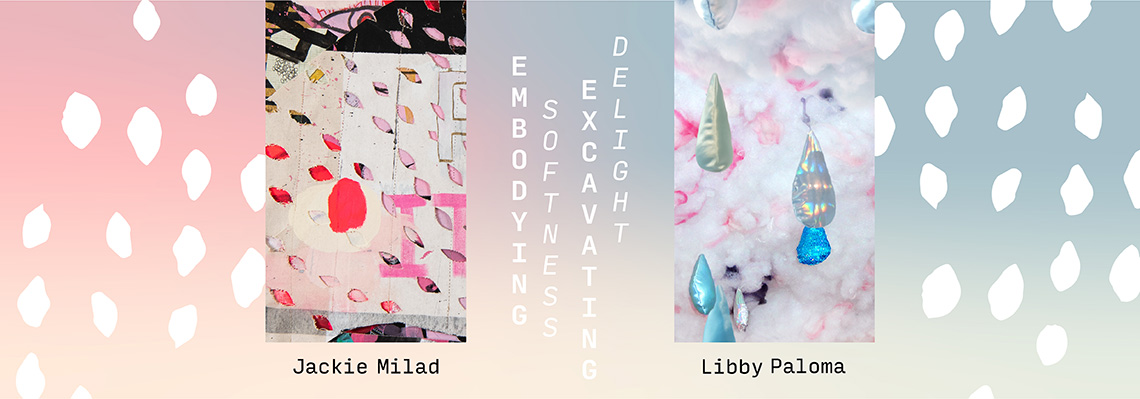October 12 – December 9, 2023
Embodying Softness / Excavating Delight sees artists Jackie Milad and Libby Paloma paired for the joy they share in their processes. Works in this show will range from mixed media wall hangings to free-standing soft sculptures. The artists consider the intersection of the lives of objects and language, and the point at which truths otherwise indiscernible manifest.
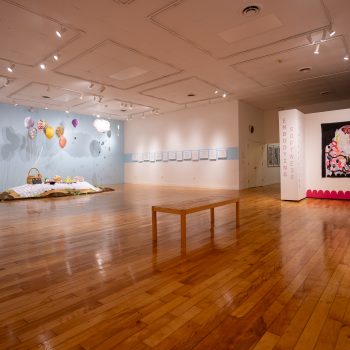
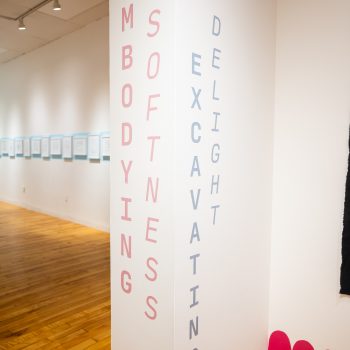
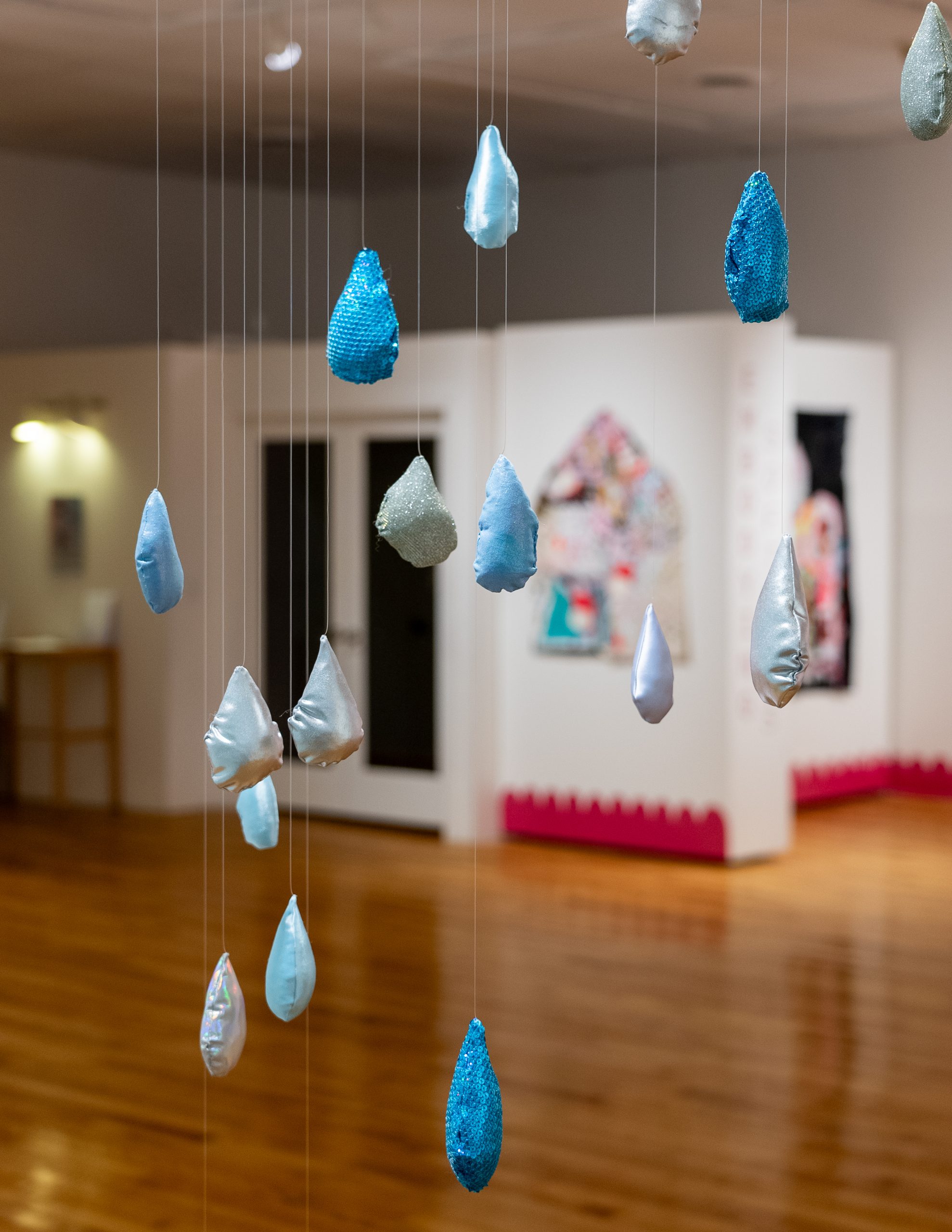
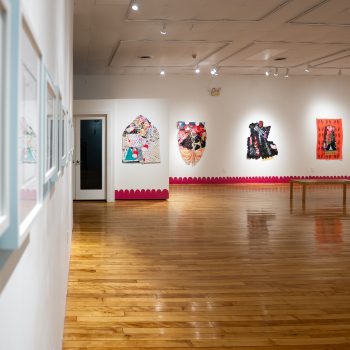
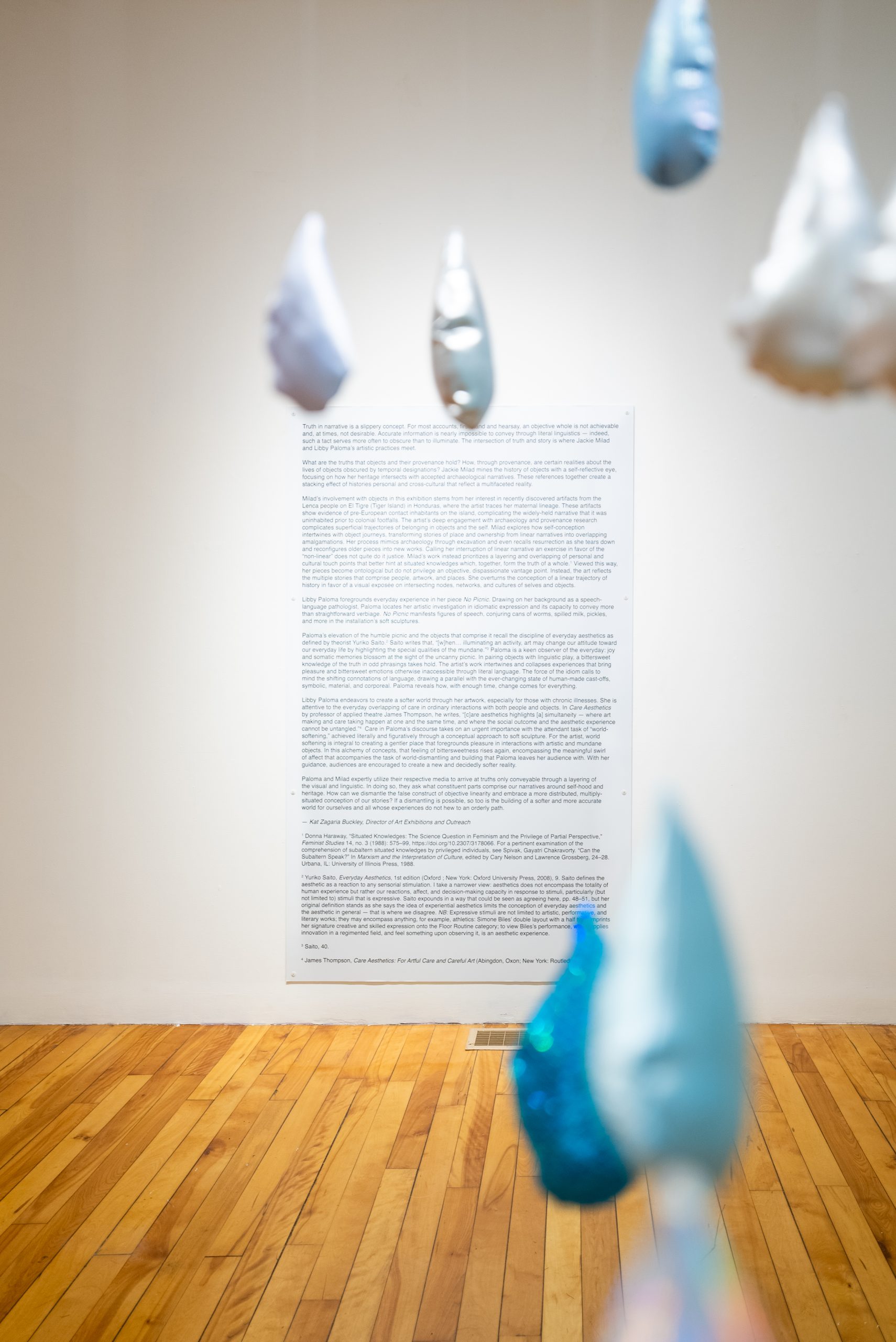
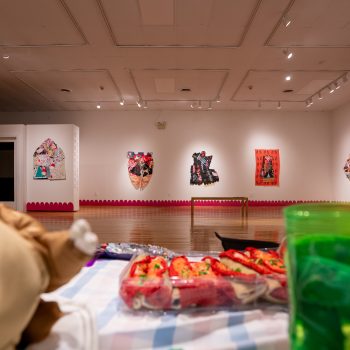
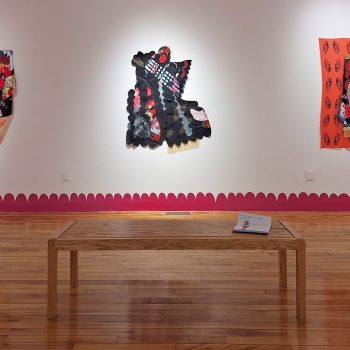
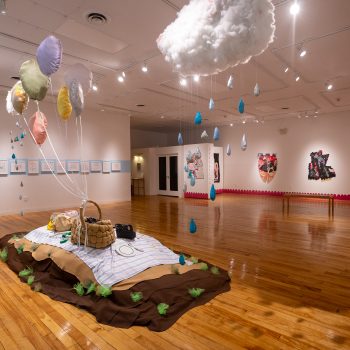
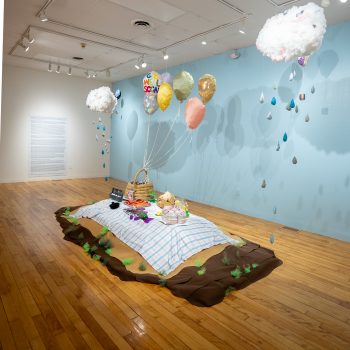
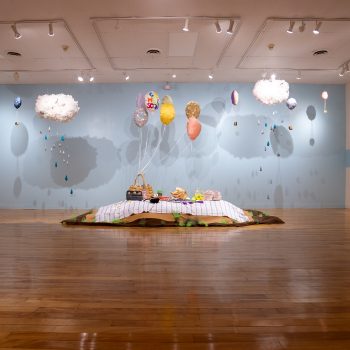
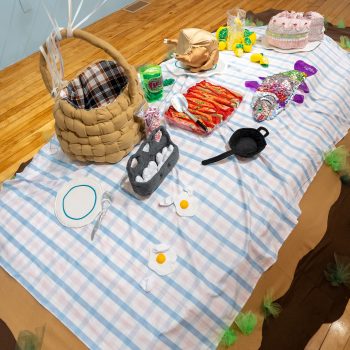
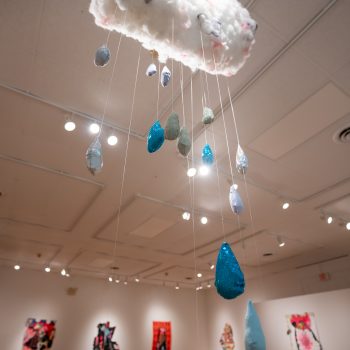
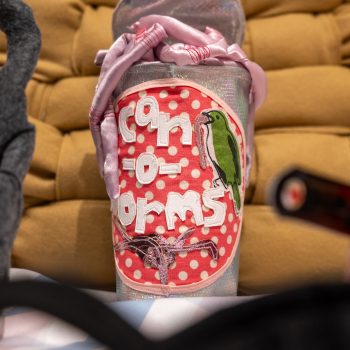
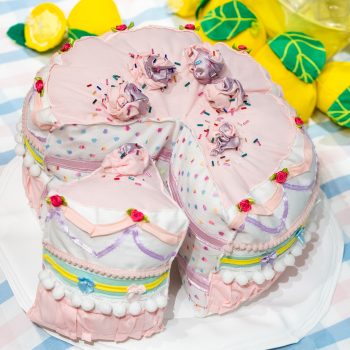
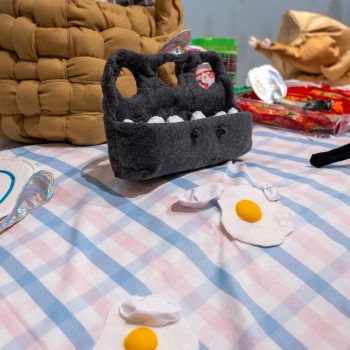
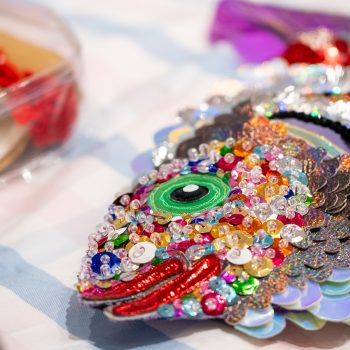
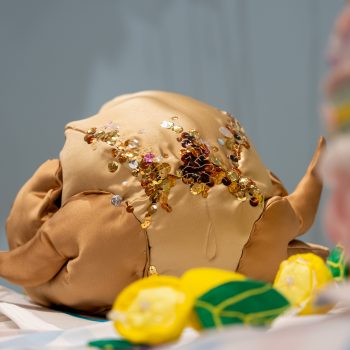
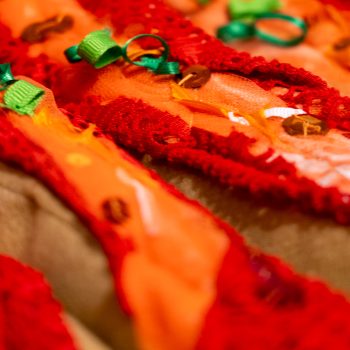
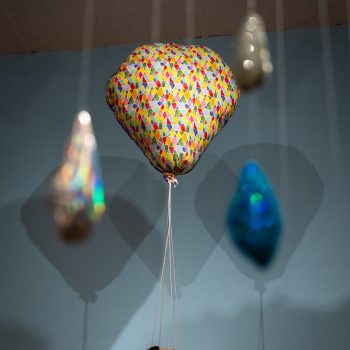

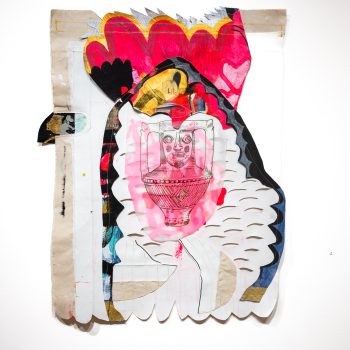
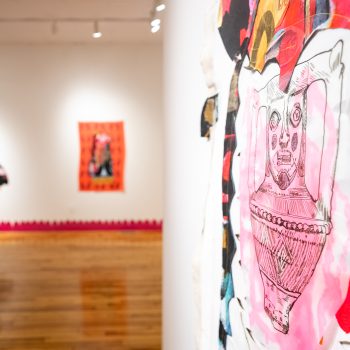
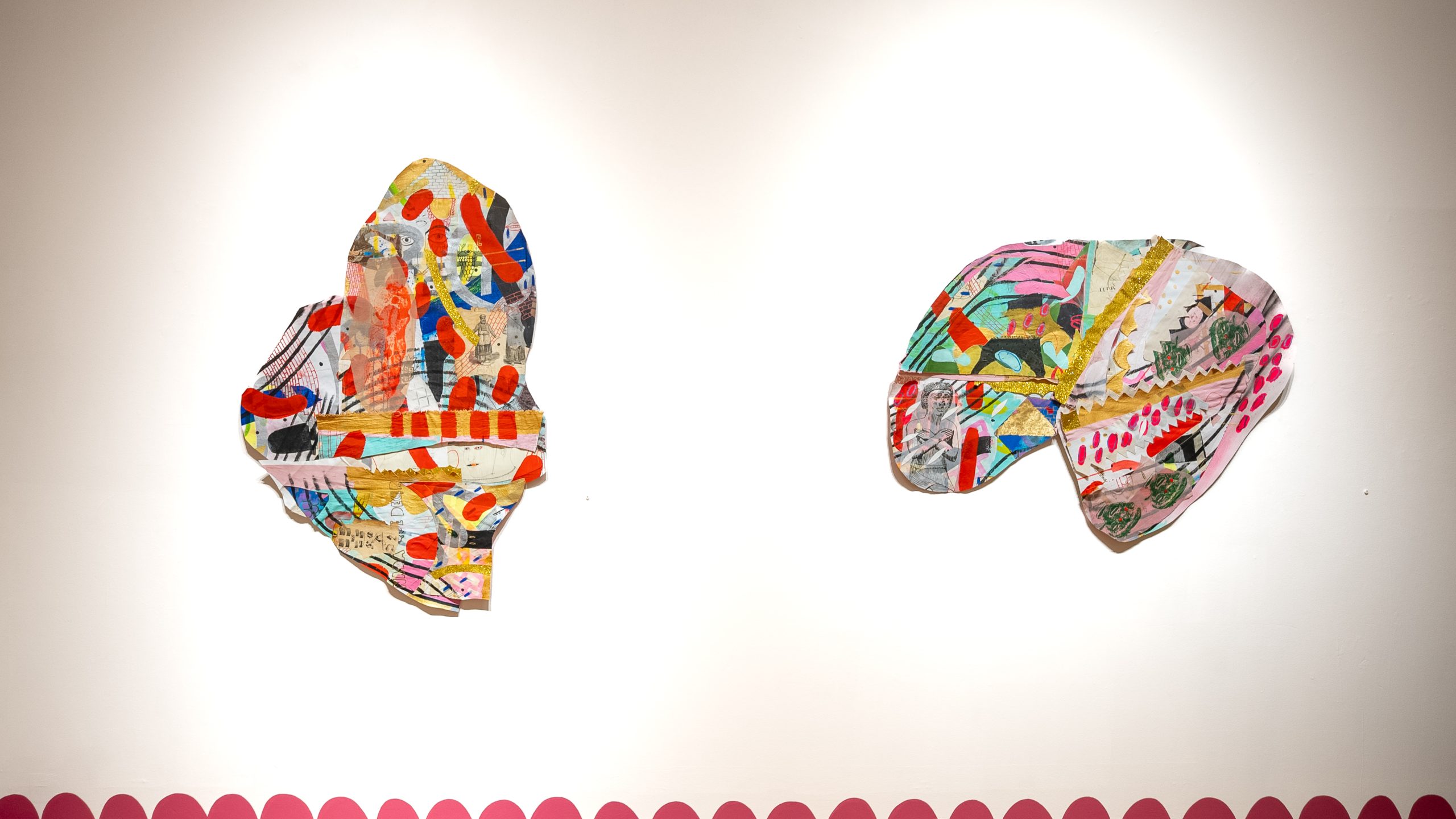
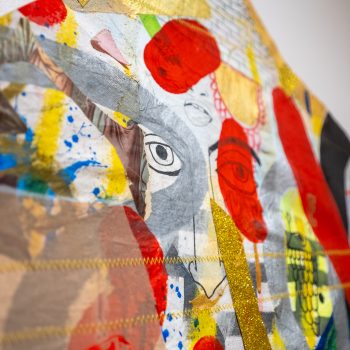
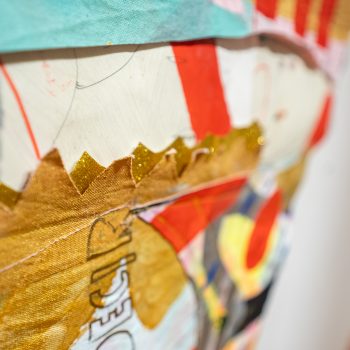
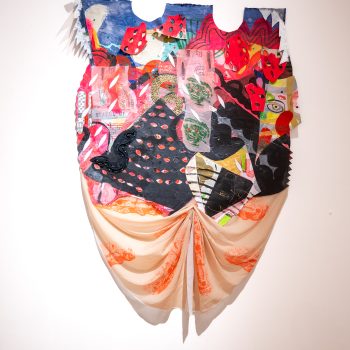
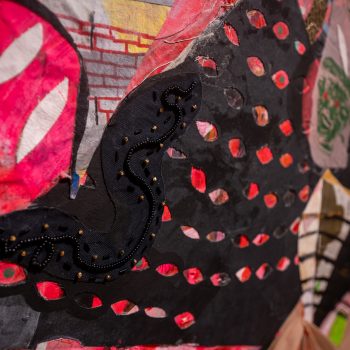
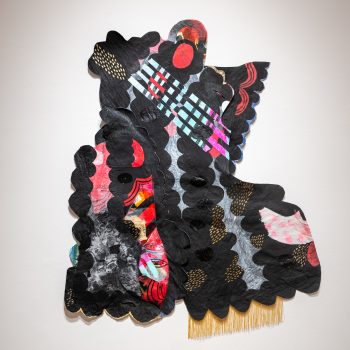
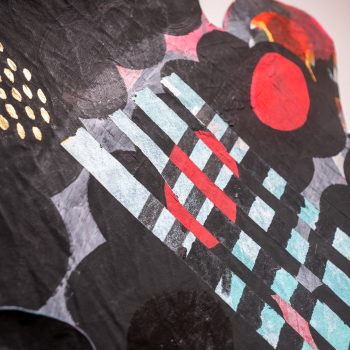

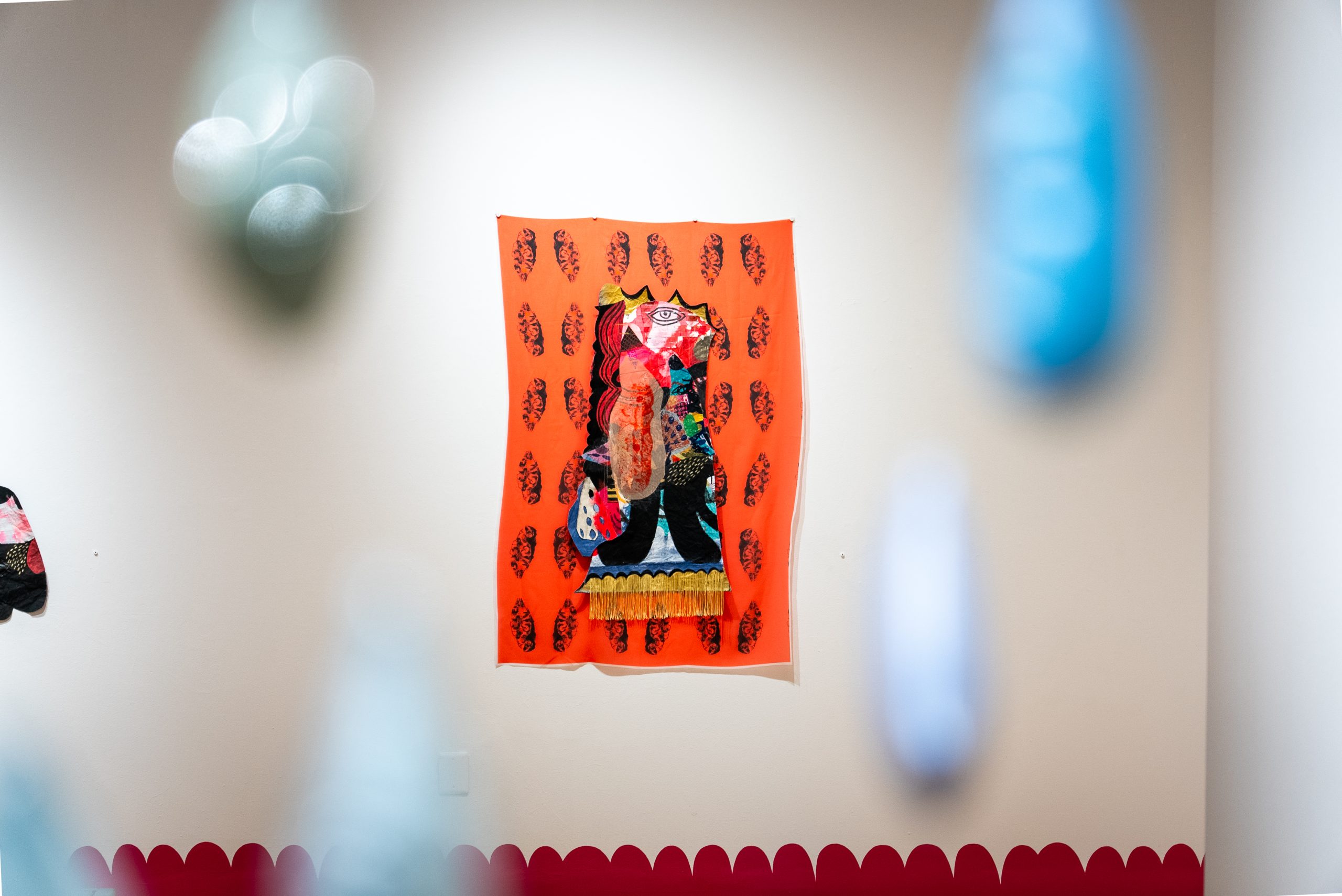
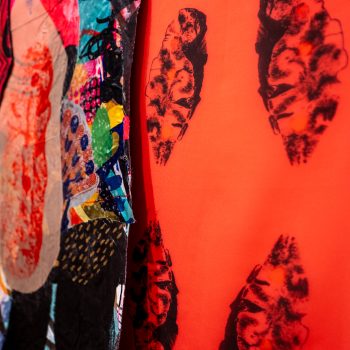
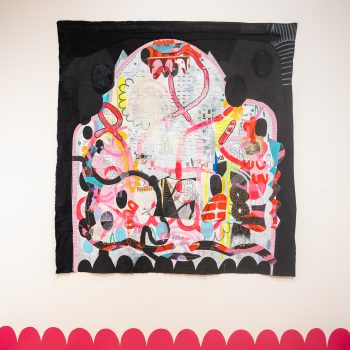
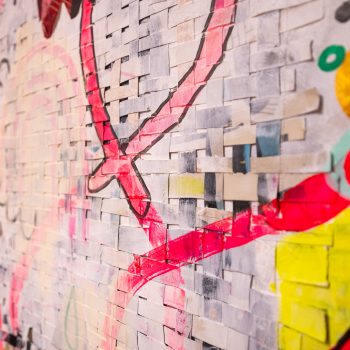

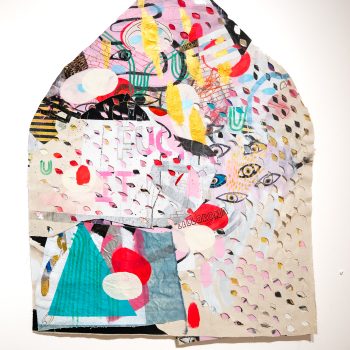
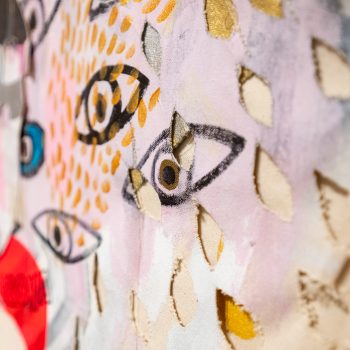
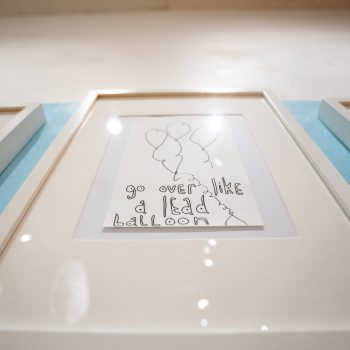
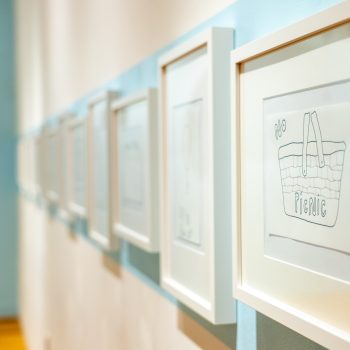
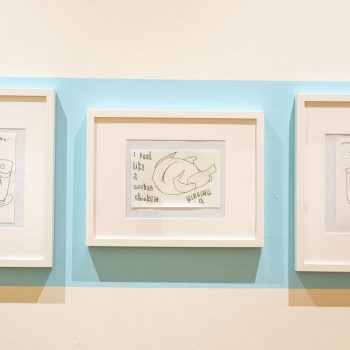
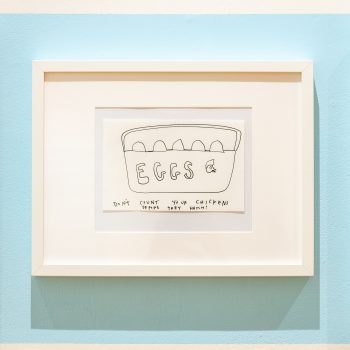
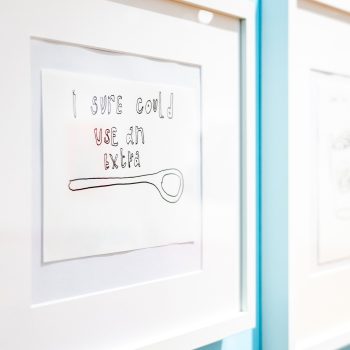
Curatorial essay
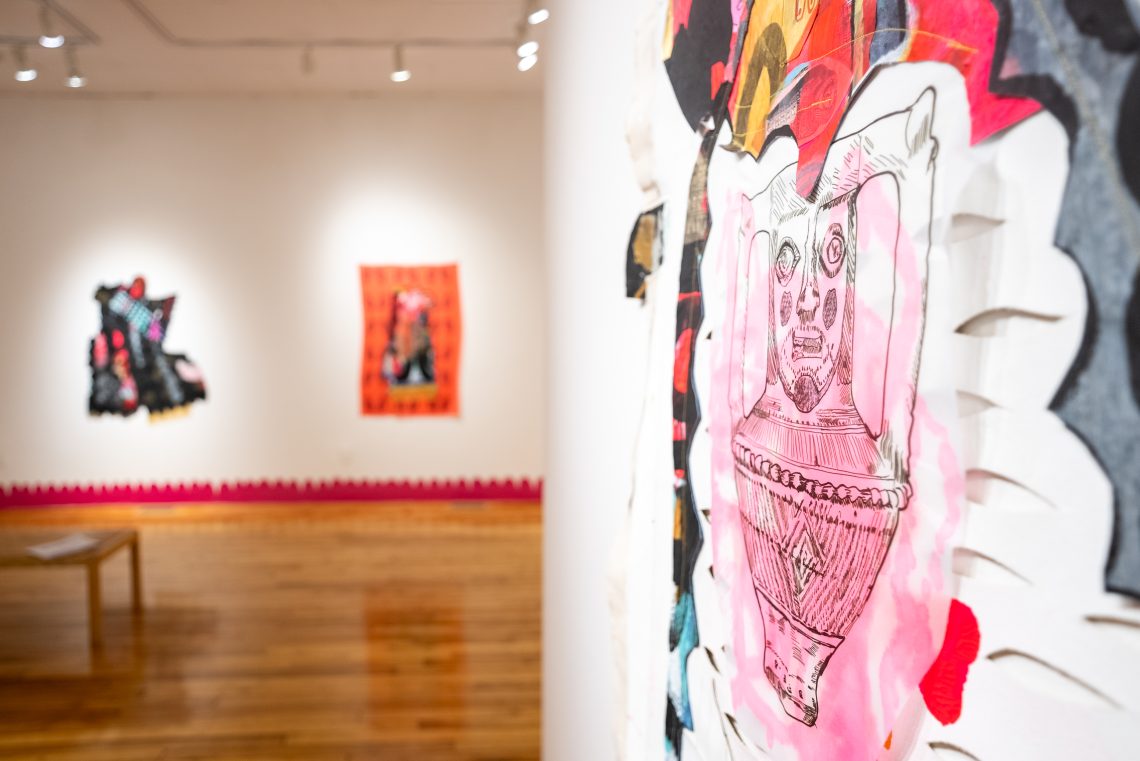
Truth in narrative is a slippery concept. For most accounts, first-hand and hearsay, an objective whole is not achievable and, at times, not desirable. Accurate information is nearly impossible to convey through literal linguistics — indeed, such a tact serves more often to obscure than to illuminate. The intersection of truth and story is where Jackie Milad and Libby Paloma’s artistic practices meet.
What are the truths that objects and their provenance hold? How, through provenance, are certain realities about the lives of objects obscured by temporal designations? Jackie Milad mines the history of objects with a self-reflective eye, focusing on how her heritage intersects with accepted archaeological narratives. These references together create a stacking effect of histories personal and cross-cultural that reflect a multifaceted reality.
Milad’s involvement with objects in this exhibition stems from her interest in recently discovered artifacts of the Lenca people on El Tigre (Tiger Island) in Honduras, where the artist traces her maternal lineage. These artifacts show evidence of pre-European contact inhabitants on the island, complicating the widely-held narrative that it was uninhabited prior to colonial footfalls. Milad’s work La Cueva Llena (2023) utilizes negative space to understand how an absence of knowledge came to define the accepted histories of El Tigre. The work’s form mimics that of a recently El Tigre discovered artifact, which acts as a window into knowledge yet unacquired. The negative space is a void of potential waiting to be filled, but it also hints at truths and histories of a long durée that are inherently unknowable.
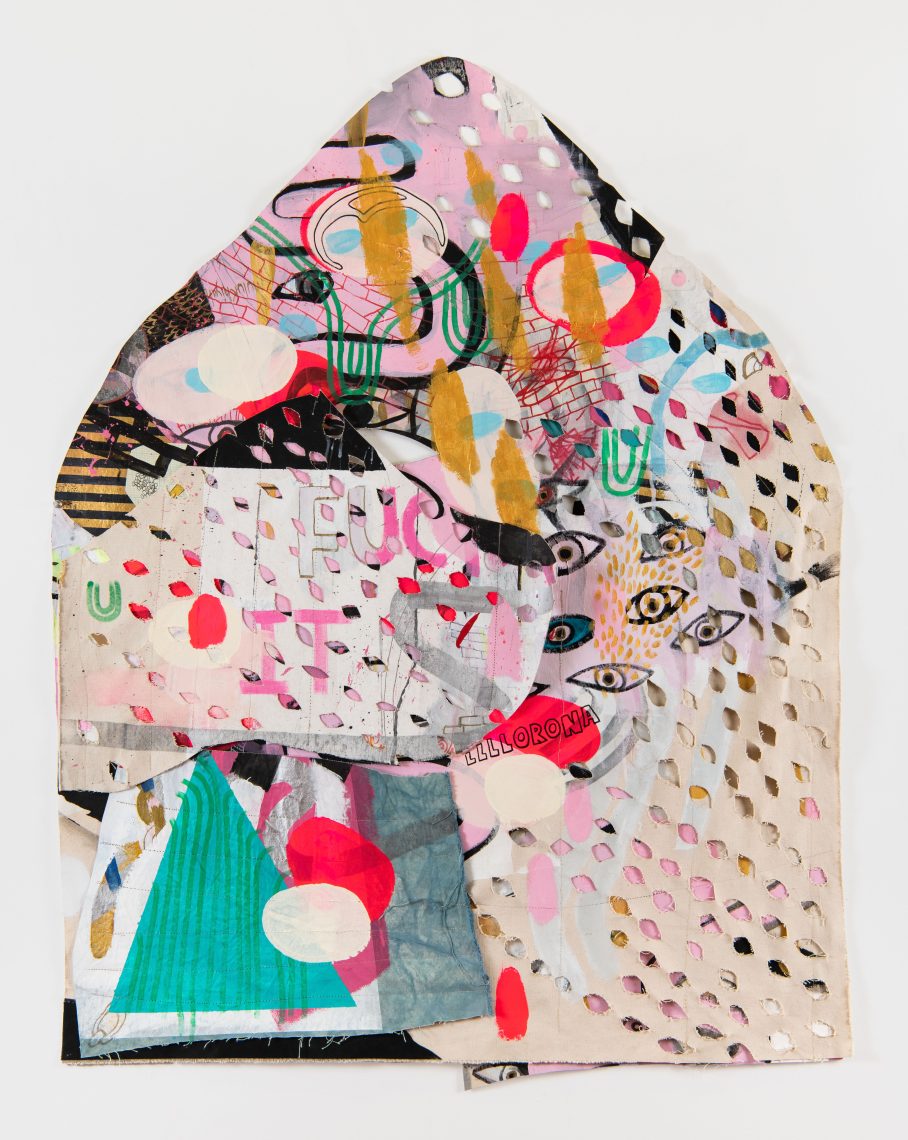
Milad’s deep engagement with archaeology and provenance research complicates superficial trajectories of belonging in objects and the self. Milad explores how self-conception intertwines with object journeys, transforming stories of place and ownership from linear narratives into overlapping amalgamations. Her process mimics archaeology through excavation and even recalls resurrection as she tears down and reconfigures older pieces into new works. Calling her interruption of linear narrative an exercise in favor of the “non-linear” does not quite do it justice. Milad’s work instead prioritizes a layering and overlapping of personal and cultural touch points that better hint at situated knowledges which, together, form the truth of a whole.1 Viewed this way, her pieces become ontological but do not privilege an objective, dispassionate vantage point. Instead, the art reflects the multiple stories that comprise people, artwork, and places. She overturns the conception of a linear trajectory of history in favor of a visual exposée on intersecting nodes, networks, and cultures of selves and objects.
Milad alludes to the journeys of objects in fuc it (2021), which takes a form reminiscent of an envelope with many almond or eye-shaped holes, along with eyes, a pyramid, and paths with neither beginning nor end. The eyes seem to watch the viewer, but we cannot return the gaze of the holes — they deny recognition and knowability. In this refusal to look back, the artwork holds power by withholding knowledge, setting up an allegory for that which cannot be known and its importance.
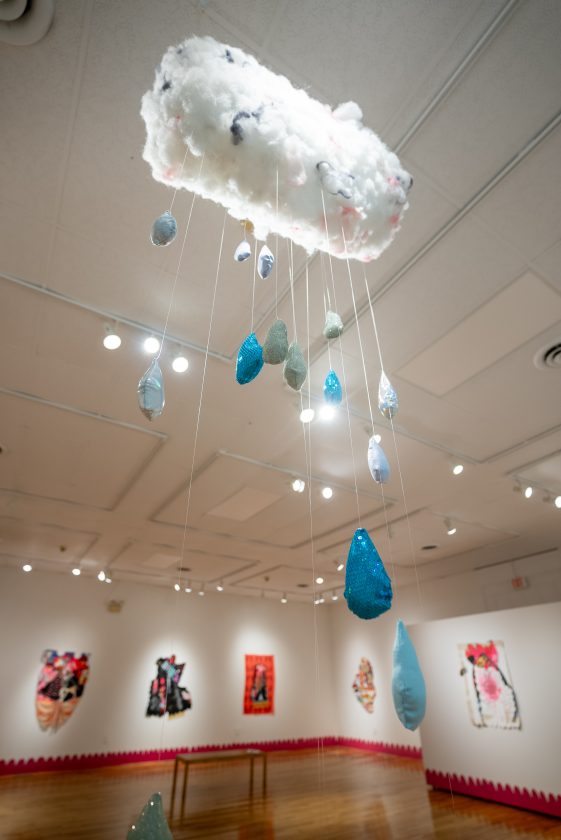
Libby Paloma foregrounds everyday experience in her piece No Picnic. Drawing on her background as a speech-language pathologist, Paloma locates her artistic investigation in idiomatic expression and its capacity to convey more than straightforward verbiage. No Picnic manifests figures of speech, conjuring cans of worms, spilled milk, pickles, and more in the installation’s soft sculptures.
Paloma’s elevation of the humble picnic and the objects that comprise it recall the discipline of everyday aesthetics as defined by theorist Yuriko Saito.2 Saito writes that, “[w]hen… illuminating an activity, art may change our attitude toward our everyday life by highlighting the special qualities of the mundane.”3 Paloma is a keen observer of the everyday: joy and somatic memories blossom at the sight of the uncanny picnic. In pairing objects with linguistic play, a bittersweet knowledge of the truth in odd phrasings takes hold. The artist’s work intertwines and collapses experiences that bring pleasure and bittersweet emotions otherwise inaccessible through literal language. The force of the idiom calls to mind the shifting connotations of language, drawing a parallel with the ever-changing state of human-made cast-offs, symbolic, material, and corporeal. Paloma reveals how, with enough time, change comes for everything.
Paloma’s artwork endeavors to create a softer world, especially for those with chronic illnesses. Her attentiveness to the everyday overlaps with the care inherent in ordinary interactions with both people and objects. In Care Aesthetics by professor of applied theatre James Thompson, he writes, “[c]are aesthetics highlights [a] simultaneity — where art making and care taking happen at one and the same time, and where the social outcome and the aesthetic experience cannot be untangled.”4 Care in Paloma’s discourse takes on elevated importance with an attendant task of “world-softening,” achieved literally and figuratively through a conceptual approach to soft sculpture. For the artist, world softening is integral in creating a gentler place that foregrounds pleasure in interactions with artistic and mundane objects. In this alchemy of concepts, that feeling of bittersweetness rises again, encompassing the meaningful swirl of affect that accompanies the task of world-dismantling and building that Paloma leaves her audience with — itself a by-product as we create a new and, for Paloma, decidedly softer reality.
Paloma and Milad expertly utilize their respective media to arrive at truths only conveyable through a layering of the visual and linguistic. In doing so, they ask what parts comprise our narratives around self-hood and heritage. How can we dismantle the false construct of objective linearity and embrace a more distributed, multiply-situated conception of our stories? If a dismantling is possible, so too is the building of a softer and more accurate world for ourselves and all whose experiences do not hew to an orderly path.
— Kat Zagaria Buckley, Director of Art Exhibitions and Outreach
1 Donna Haraway, “Situated Knowledges: The Science Question in Feminism and the Privilege of Partial Perspective,” Feminist Studies 14, no. 3 (1988): 575–99, https://doi.org/10.2307/3178066. For an important note on the comprehension of subaltern situated knowledges by privileged individuals, see Spivak, Gayatri Chakravorty. “Can the Subaltern Speak?” In Marxism and the Interpretation of Culture., edited by Cary Nelson and Lawrence Grossberg, 24–28. Urbana, IL: University of Illinois Press, 1988.
2 Yuriko Saito, Everyday Aesthetics, 1st edition (Oxford ; New York: Oxford University Press, 2008), 9. While Saito defines the aesthetic as a reaction to any sensorial stimulation, I take a narrower view: aesthetics does not encompass the totality of human experience but rather our reactions as they pertain to affect and decision-making in response to stimuli, particularly (but not limited to) stimuli that is expressive. Saito later expounds in a way that could be read as agreeing with this reading, pp. 48–51, yet her original definition stands as she says the idea of experiential aesthetics limits the conception of everyday aesthetics and the aesthetic in general— that is where we disagree. Stimuli expressive in this conception are not limited to artistic, performative, and literary works; they may encompass anything, for example, athletics: Simone Biles’ double layout with a half twist imprints her signature creative and skilled expression onto the Floor Routine category; to view Biles’s performance, which applies innovation in a regimented field, and feel something upon observing it, is an aesthetic experience.
3 Saito, 40.
4 James Thompson, Care Aesthetics: For Artful Care and Careful Art (Abingdon, Oxon; New York: Routledge, 2023), 84.
Scenes from our October opening
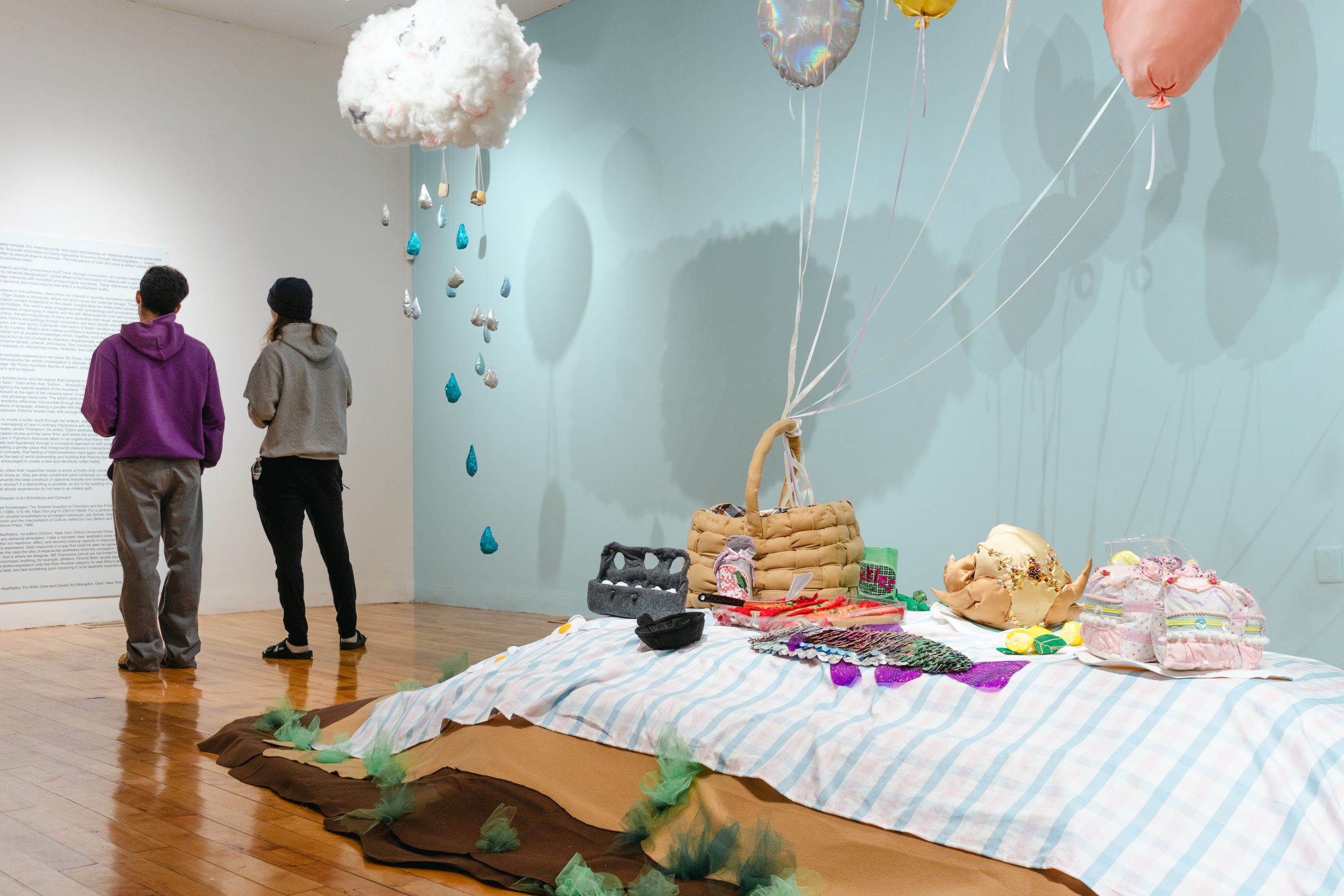
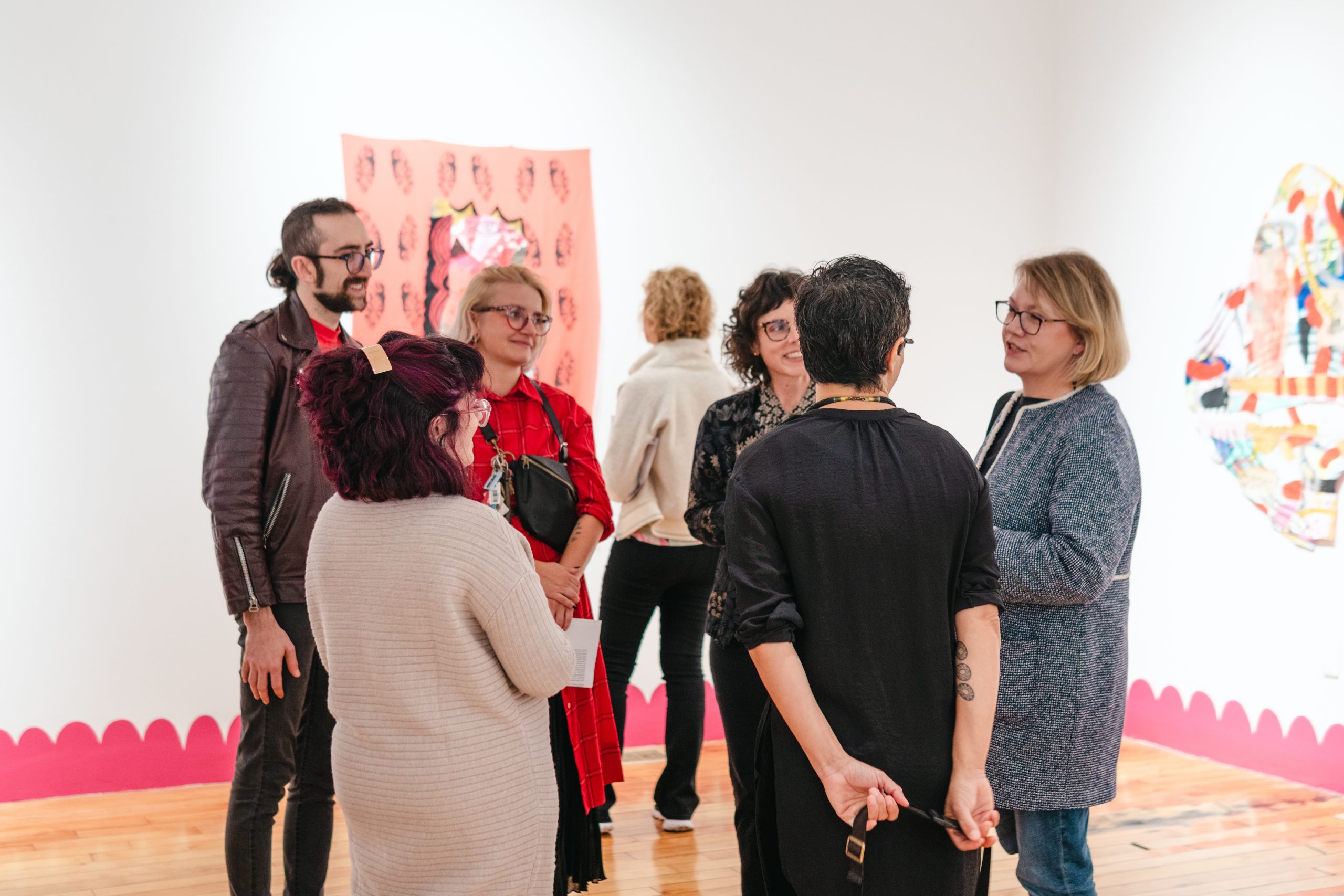
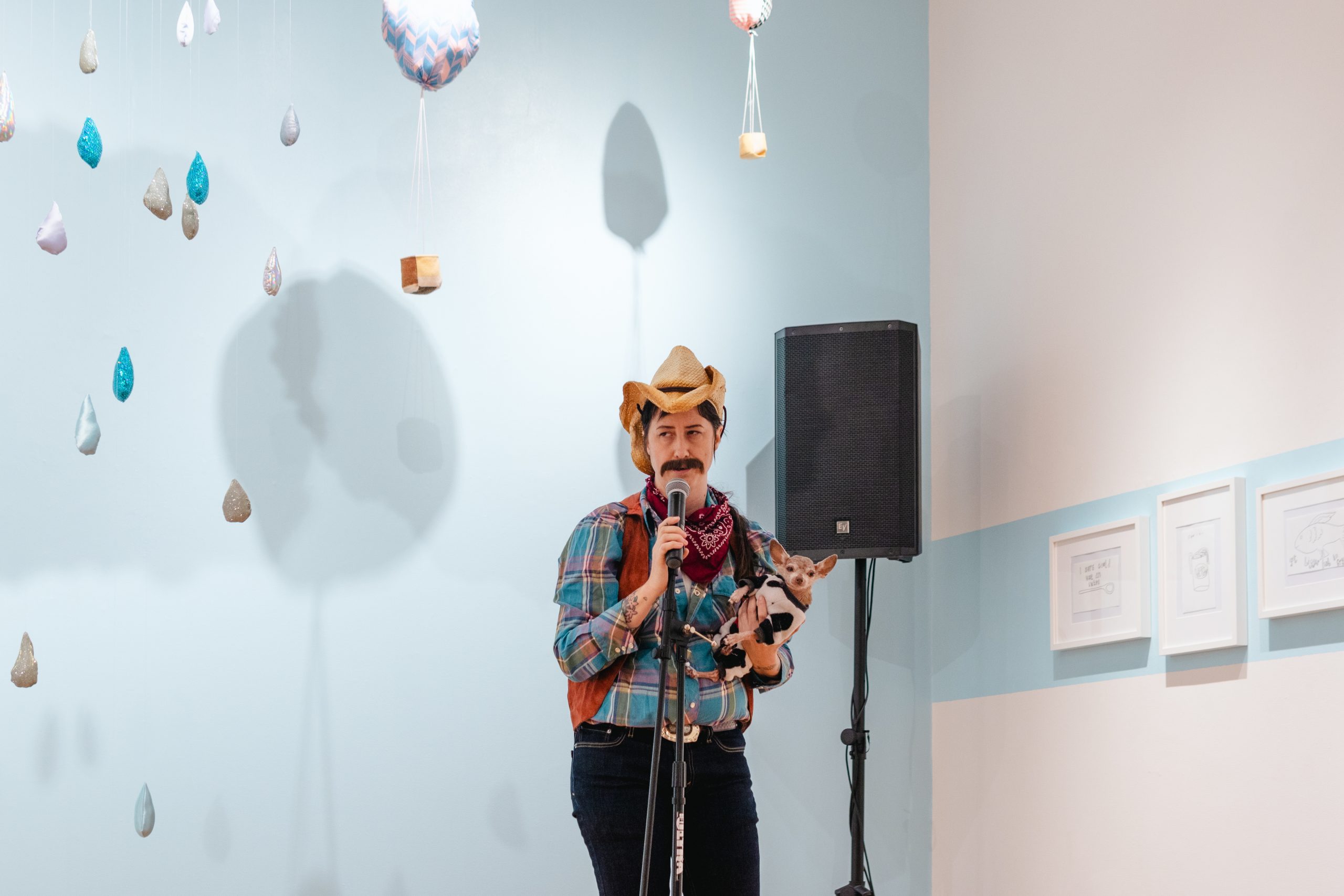
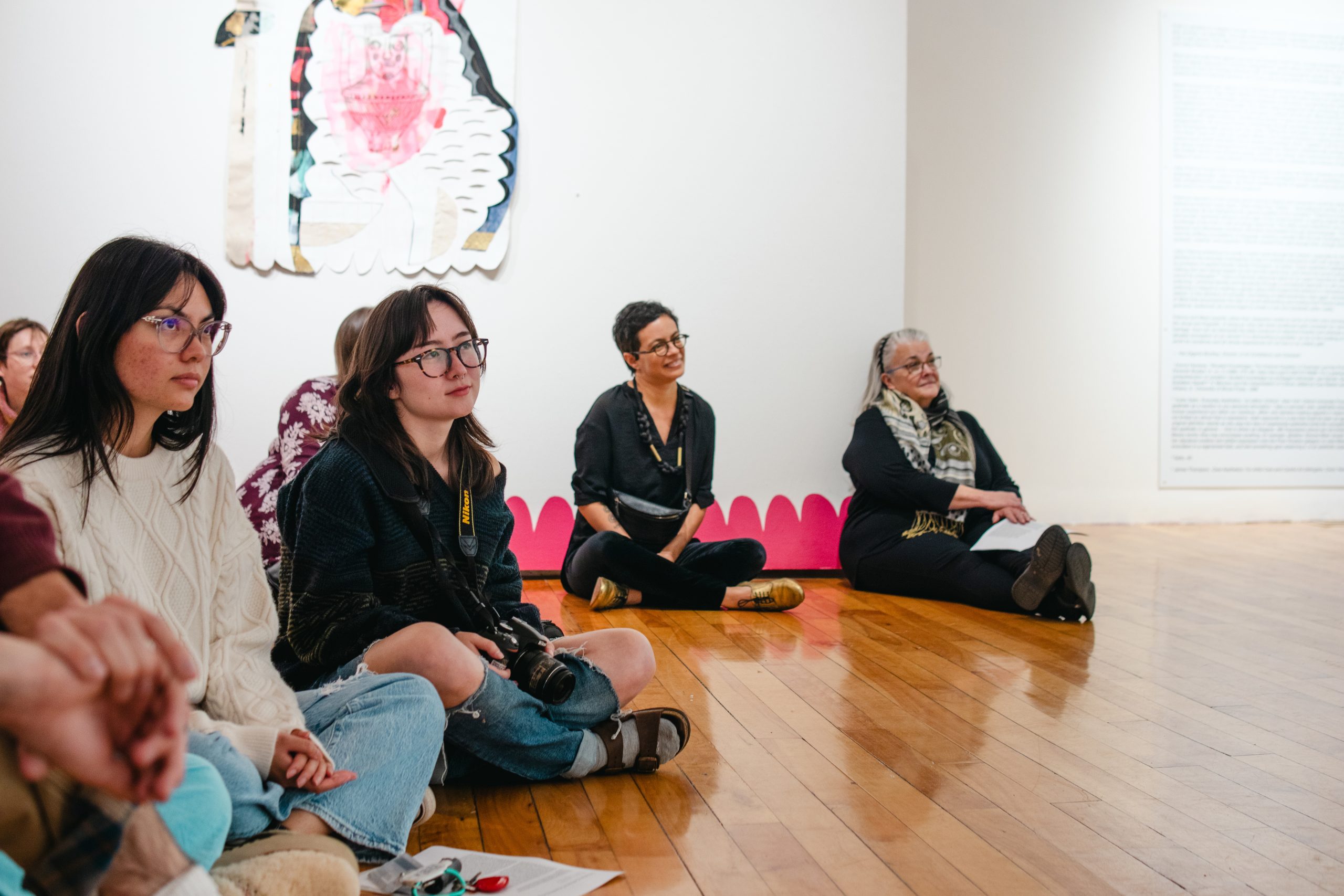
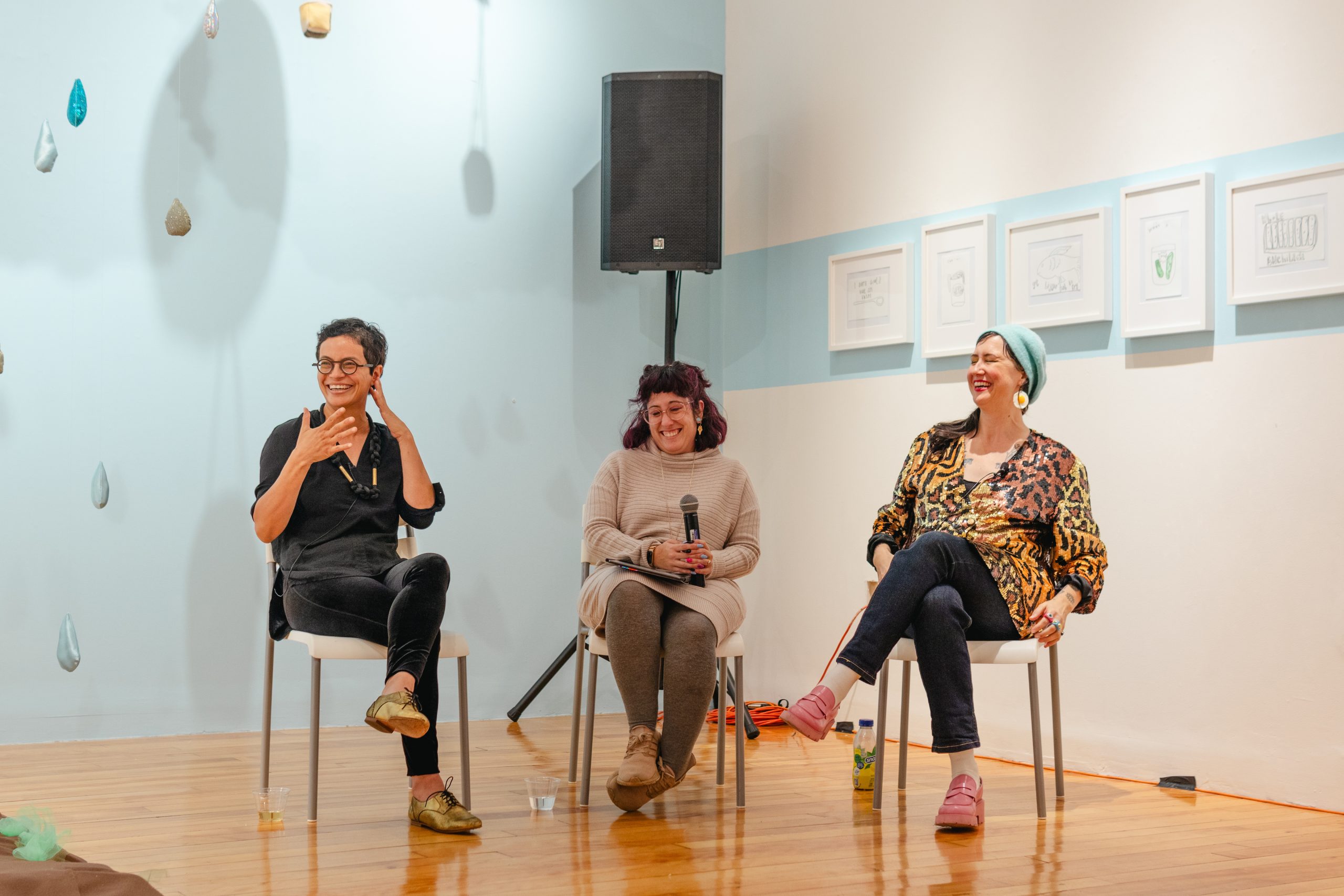

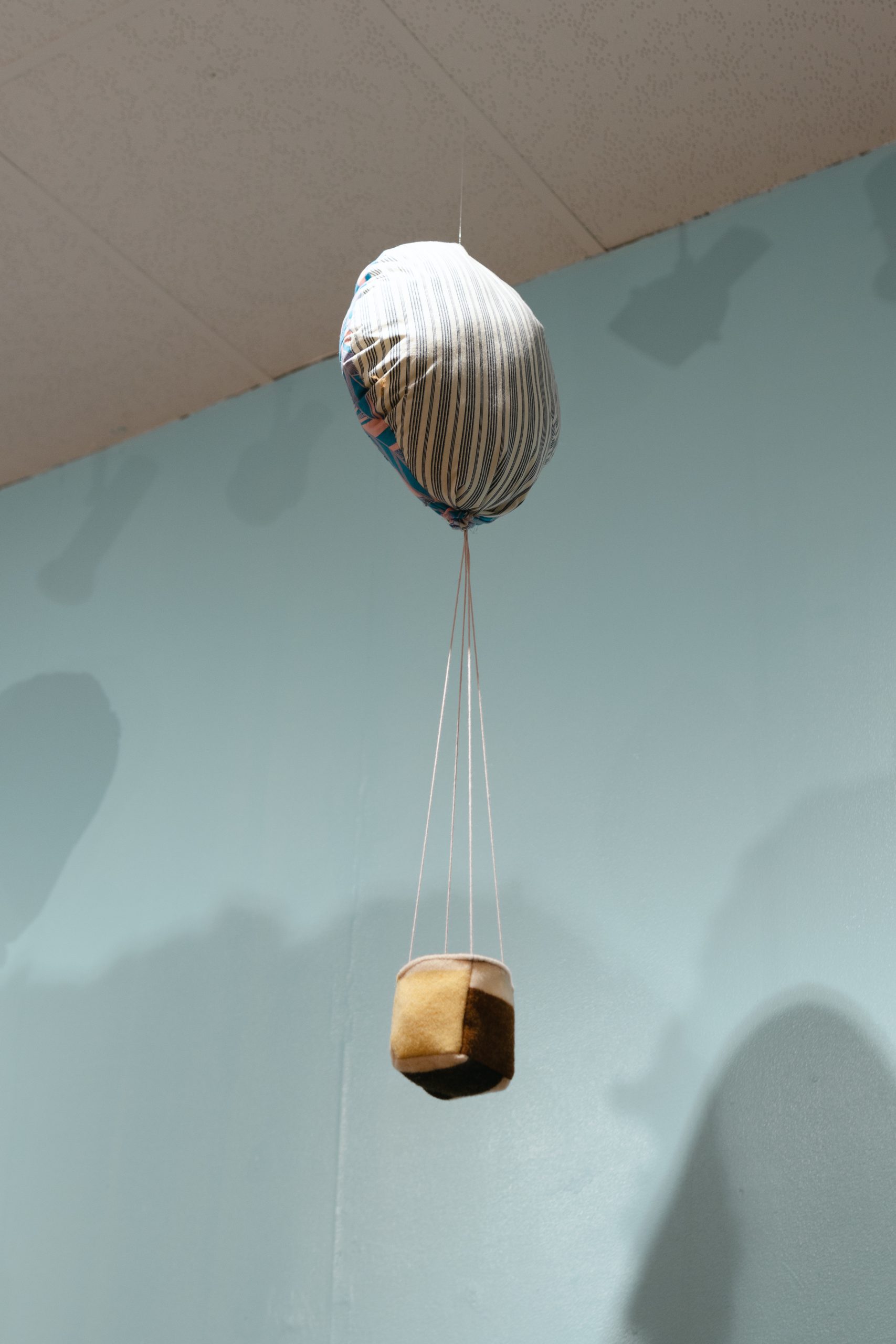
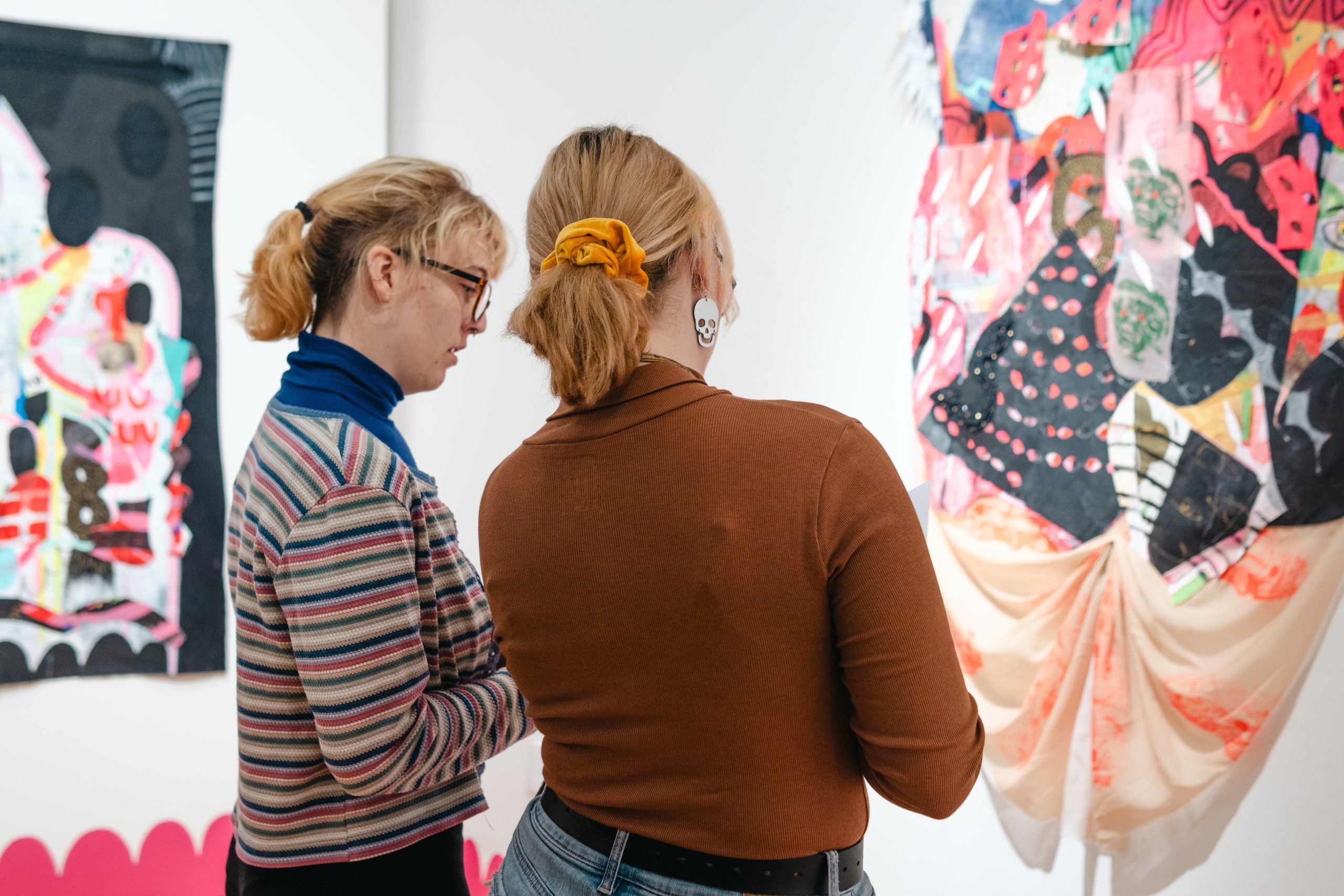
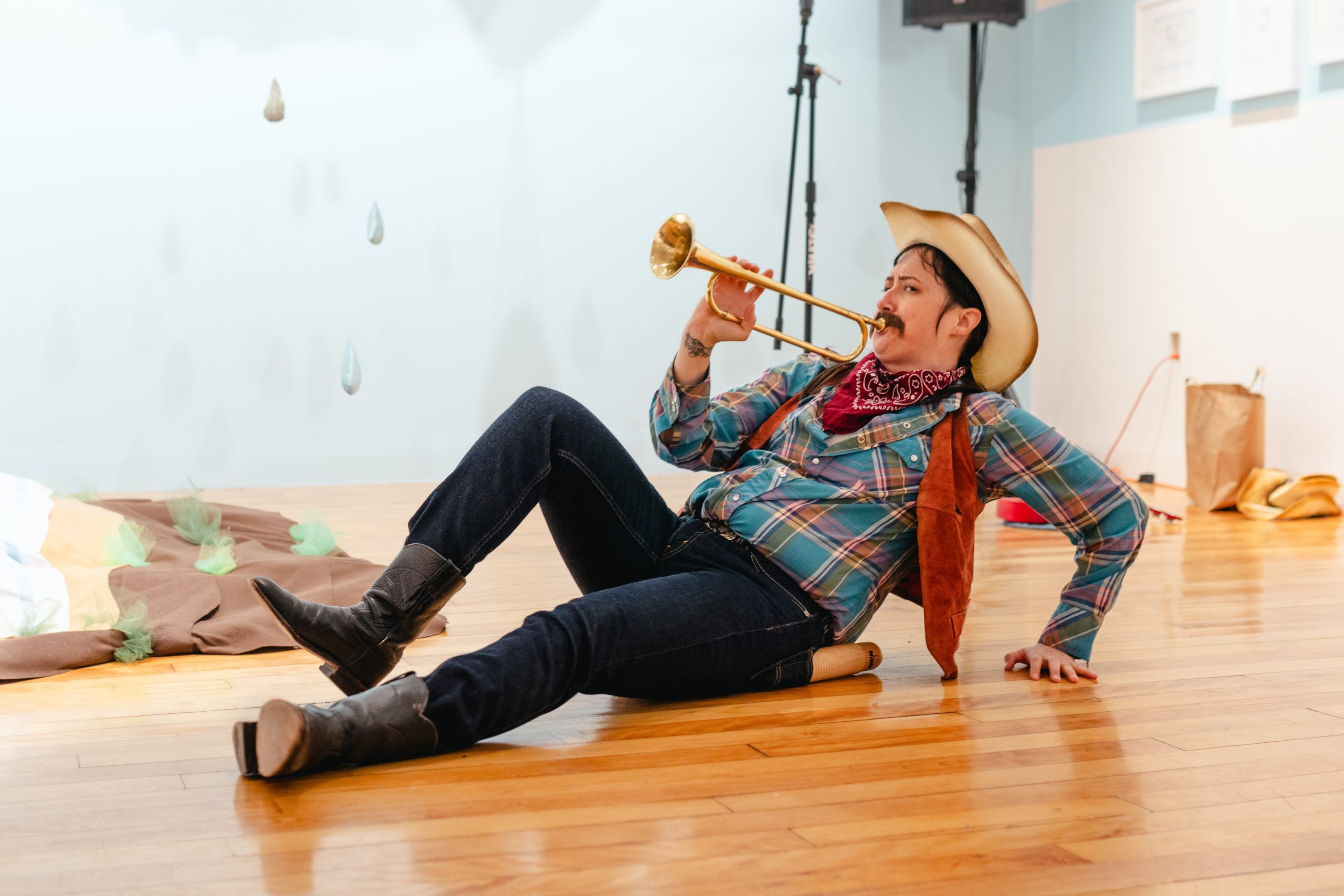
Jackie Milad (she/her) is a Baltimore City-based artist whose mixed-media abstract paintings and collages address the history and complexities of dispersed cultural heritage and multi-ethnic identity. She has participated in numerous group and solo exhibitions nationally and internationally. In 2022 Jackie received the Municipal Art Society of Baltimore City Travel Prize to conduct in-depth research on the Egyptian antiquities held at the British Museum and Petrie Museums in London. Her work is included in several public collections, including The Baltimore Museum of Art, Academy Art Museum, Johns Hopkins University Sheridan Library, Robert W. Deutsch Foundation, Pizzuti Collection, and Meta (Facebook) Open Art Program. Milad received her BFA from the School of the Museum of Fine Arts at Tufts University, and her MFA from Towson University. She is currently represented by SOCO Gallery in Charlotte, NC.
Libby Paloma (she/they) is an interdisciplinary artist currently based in New York, NY. Paloma’s work is informed by aspects of her/their Mexican-American, queer, disabled identity, often using soft sculpture, installation, and performance to create gentle environments and often humorous encounters. Inspired by everyday objects and natural surroundings, Paloma’s installations and performances are an invitation to rest in a fluffy, puffy, tender world. Paloma’s work has been exhibited at El Museo Del Barrio in New York, NY; Burlington City Arts (BCA), Burlington, VT; SOMArts in San Francisco, CA; SPACE Gallery, Portland, ME; Geary Contemporary, Millerton, NY, Unprofessional Variety Show, New York, NY, and the Dorsky Museum in New Paltz, NY where she received the Artist Purchase Award. In July of 2023, Paloma received an Award of Excellence for their installation in the QUEERwerks exhibition at Silvermine Gallery, New Canaan, CT. Paloma holds a Bachelor’s Degree (BA) in Liberal Studies, a Master’s Degree (MS) in Communicative Disorders from San Francisco State University, and a Master of Fine Arts (MFA) from Parsons School of Design, The New School, where she/they received the President and University full Scholarship.
Embodying Resistance/Excavating Delight is supported by generous funding from the Margaret E. Burnham Charitable Trust, as well as the University of Southern Maine’s Department of Intercultural Student Affairs and Women and Gender Studies Department.
Top: Left: Jackie Milad, fuc it (detail), 2021. Mixed media on canvas collage, 45 1/2 x 37 in. Right: Libby Paloma, For the Stary-Eyed, For the Healers (detail), 2023. Fabric, armature, polyfill, and essential oils, 12 x 8 x 5 ft.


